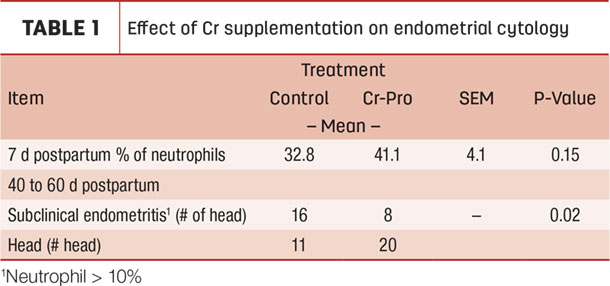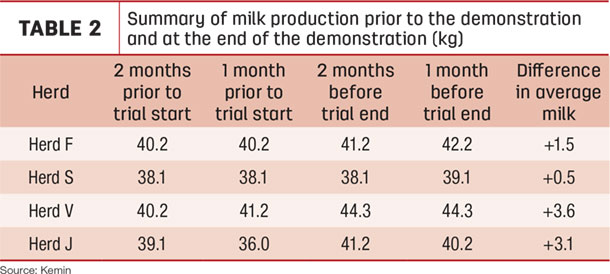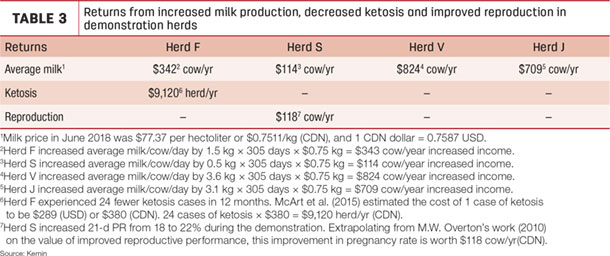Advances we’ve made in nutrition and management systems in recent decades have led to improvements in milk and component production that far outpace reproductive performance.
Worldwide, the poor reproductive performance of dairy herds has become a major concern, especially in Holstein herds. Decline in conception rate and increase in calving interval over the last decades have been confirmed by several studies.
Infertility is the number one reason for culling dairy cows in the U.S., and it is estimated to cost the U.S. dairy industry half-a-billion dollars annually.
Transition: The six-week period around freshening
Transitioning dairy cows are subject to acute physical stress at calving as well as the challenge associated with negative energy balance due to the sudden onset of lactation.
The transition period also coincides with suppressed immune function, leaving cows more prone to infectious diseases such as mastitis and metritis. The sudden onset of lactation imposes tremendous metabolic demands on the dairy animal.
The increased energetic demands of a new lactation results in mobilization of fat reserves in the form of non-esterified fatty acids (NEFAs).
If a cow’s liver cannot utilize NEFAs quickly enough, there may be excessive fat deposition in her liver or a buildup of ketone bodies in her blood.
The result is a listless animal with no appetite that cannot maintain an adequate blood glucose supply – a cow with ketosis. In addition to ketosis, the fresh cow may experience milk fever due to the sudden calcium drain imposed by lactation.
The stress response and reproduction
Stress can be defined as any stimulus, such as heat, fear or pain, that disturbs or interferes with the normal physiological equilibrium of an animal.
In response to stress, glucocorticoids (primarily cortisol) and catecholamines (adrenaline and noradrenaline) act to alter carbohydrate and protein metabolism, growth, reproduction and immune function.
Activation of the immune system leads to inefficient feed utilization due to consumption of nutrients by the immune system.
Despite the increase in nutrients required by the immune system, activation of the immune system also leads to a decrease in feed intake which further exacerbates the problem.
Upon the initiation of a stress response, an energetically demanding immune response may be stimulated.
If stress becomes chronic (which often occurs during transition due to management factors such as pen movements, mixing of heifers into mature cow groups, adjustment to new rations and new routines, etc.), in addition to health challenges, there will be a continual release of cortisol. This is not a desirable situation because nutrients are diverted away from productive functions such as milk production and reproduction.
Chromium supplementation improves insulin sensitivity
The essential trace mineral chromium (Cr) has the unique ability to bind to insulin receptors and allow glucose into cells. In cattle, chromium supplementation has increased insulin sensitivity, altered immune responses and reduced cortisol levels.
University studies with chromium have also shown to reduce subclinical metritis, reduce days to first service, improve conception rates and increase pregnancy rates.
Reductions in stress, improvements in immunity and increased reproductive efficiency
Chromium supplementation minimizes the negative effects of the stress response by decreasing serum cortisol during stressful periods for cattle and other species.
Remember those negative effects of cortisol on reproductive health and productivity? Minimizing blood cortisol concentrations with the help of chromium is desirable to prevent those negative effects.
Various aspects of immunity are also affected by chromium supplementation. Studies have demonstrated certain immune cells such as lymphocytes functioned more efficiently, circulating neutrophils were increased, primary and secondary antibody responses to a disease challenge were improved, and tetanus vaccine responses were improved when cows were supplemented with the trace mineral.
Research at Cornell University suggests supplemental chromium enhanced immune responses in early lactation to bacterial challenges in the uterus (see Table 1).

Animals receiving chromium had half the rate of subclinical endometritis (metritis) infections (P less than 0.02) as control animals by day 40 of their lactations.
Much of this improvement in immune function can likely be attributed to mitigation of the stress response in the presence of chromium.
Multiple studies have demonstrated a significant increase in feed intake and subsequent increase in milk yield in early lactation dairy cows supplemented with chromium both pre- and postpartum, likely due to the potentiation of insulin action by the mineral.
This increase in feed intake accompanied by increased milk production would tend to indicate a decrease in the amount of time the early lactation animal spends in negative energy balance, which may also partially explain why supplementation has been shown to reduce days to first service and days to first ovulation in dairy cattle.
When stress is minimal, and immunity enhanced, improved reproductive herd health is likely to follow.
Farm demonstrations with chromium in Canada
Four dairy herds ranging in size from 175 to 500 cows and fed by the same nutritionist were enrolled in a yearlong demonstration.
The largest herd was fed chromium only during the transition period (three weeks before and three weeks after calving), while the other three herds fed chromium throughout the lactation.
Average milk production for the herds in the two months prior to the start of the demonstration and for the last two months of the demonstration are shown in Table 2.

All herds showed an increase in average daily milk production ranging from 0.5 to 3.6 kilograms.
In the 500-cow herd, Herd F, ketosis events decreased from 12 times per month during the year prior to the demonstration to 10 times per month during the demonstration.
All herds except Herd J experienced a reduction in the percentage of cows open past 150 days in milk (DIM) by 3 to 5 percent.
The greatest change in 21-day pregnancy rate was seen in Herd S, where 21-day pregnancy rate increased from 18 to 22 percent during the demonstration.
The returns from chromium use in each herd are displayed in Table 3.

The additional milk income from using chromium ranged from $114 to $824 per cow per year. The decreased ketosis events in Herd F represented a savings to the herd of $9,120 per year.
The value of an improved 21-day pregnancy rate in Herd S was $118 per cow per year. When return over investment for chromium use was calculated for each herd, it ranged from 2.6-to-1 to 18-to-1.
Understanding the relationship between stress, immunity and reproductive herd health is paramount to discovering best nutritional management practices for your dairy herd.
Chromium supplementation primarily acts to improve insulin sensitivity and reduce the release of stress hormones, both of which enhance reproductive health.
Ultimately, this improvement in overall herd reproductive health should contribute to lower veterinary and medical costs, improved conception rates, higher pregnancy rates and better milk production. ![]()
References omitted but are available upon request. Click here to email an editor.
Michelle Wieghart is the technical service manager for Kemin. Email Michelle Wieghart.







